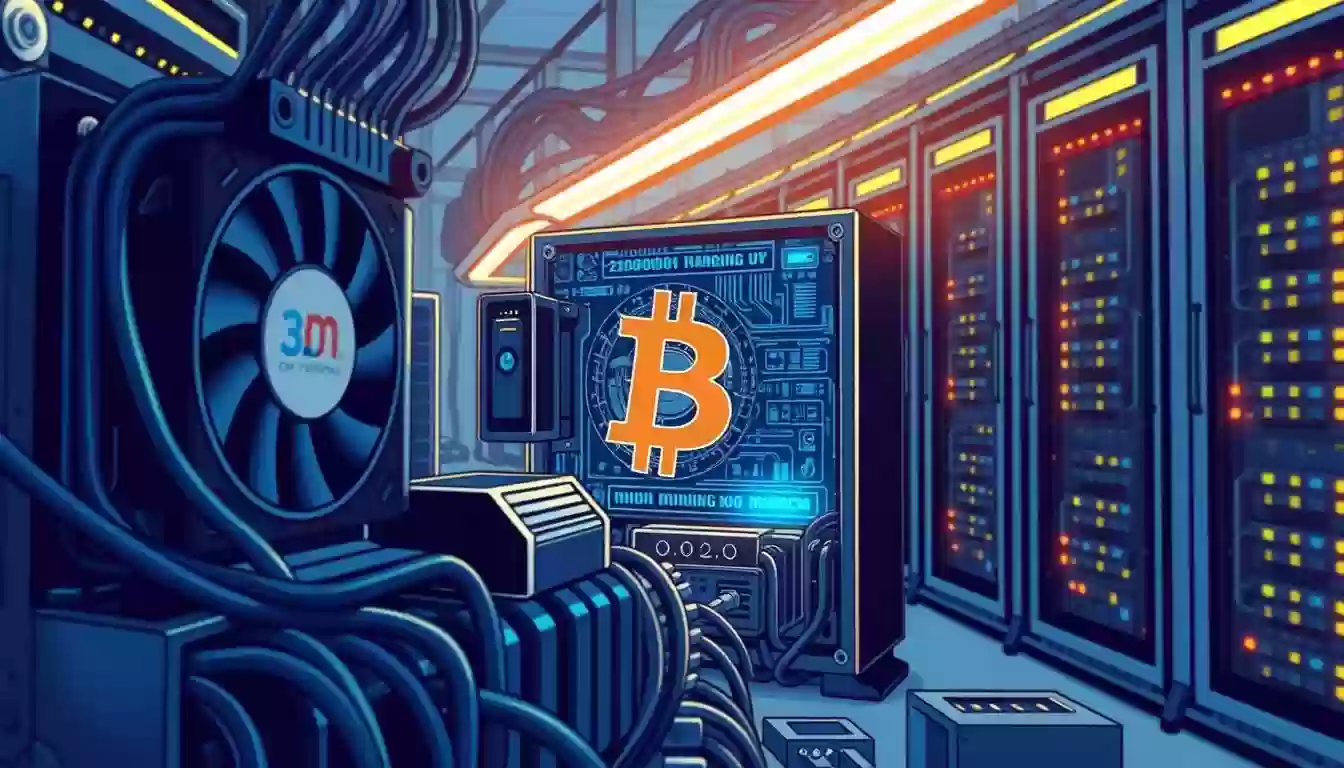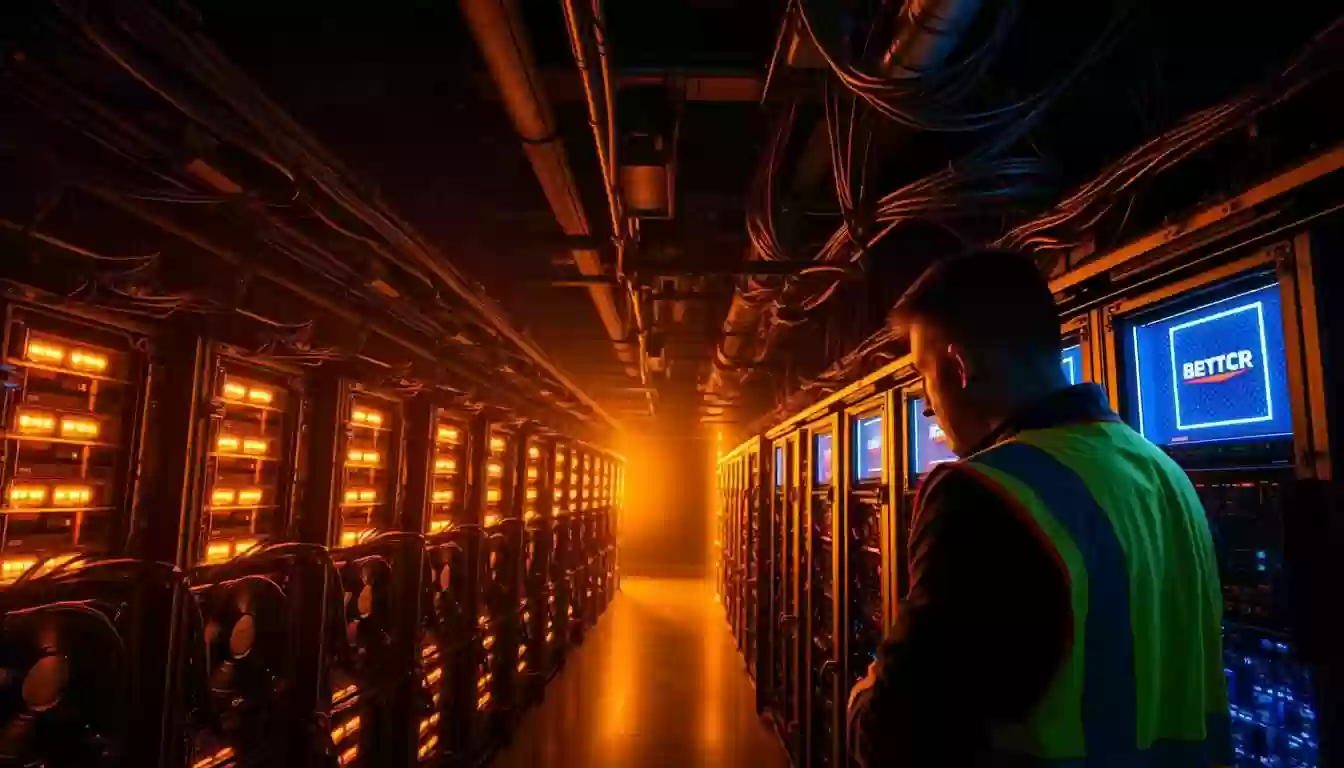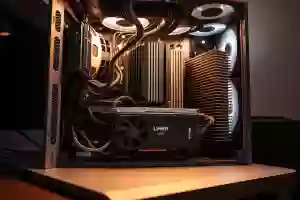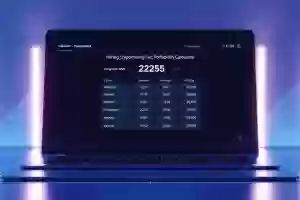Dive into the Exciting World of Crypto Mining
 03 Mar 25
03 Mar 25
Over the past decade, crypto mining has evolved from a niche activity to a highly competitive and energy-intensive process. What began with simple CPU mining has now transformed into sophisticated operations involving specialized hardware. This digital revolution has not only reshaped how transactions are validated but also how new coins are generated.
At its core, crypto mining is about more than just creating new coins. It’s the backbone of blockchain technology, ensuring transactions are secure and reliable. Imagine a world where every transaction is recorded on a decentralized ledger, maintained by a network of powerful computers. This is the world of crypto mining.
The rise of specialized hardware, like ASIC miners, has made mining more efficient but also more competitive. Today, mining operations are often large-scale, with farms of powerful machines working together to solve complex mathematical puzzles. These puzzles, or hashes, are at the heart of blockchain security, ensuring that transactions are validated and added to the ledger.
As we explore the world of crypto mining, we’ll delve into key terms like blockchain, hash rates, and the role of miners. Whether you’re a tech enthusiast or just curious about this digital frontier, this guide will make complex concepts accessible. Join us as we uncover the fascinating details behind this revolutionary technology.
From the early days of CPU mining to today’s advanced operations, crypto mining has come a long way. Learn more about how this process works and why it’s essential for the future of digital transactions.
Introduction to Crypto Mining Essentials
Let’s break down the fundamentals of crypto mining and explore its critical role in the digital currency ecosystem. This process is more than just generating new coins; it’s the backbone of blockchain security and transaction validation.
What is Crypto Mining?
Crypto mining is the process through which transactions are verified and added to a blockchain. Imagine it as a digital ledger updated by a network of computers solving complex puzzles. Miners use powerful hardware to solve these puzzles, ensuring the integrity of the blockchain.
The Role of Miners in the Blockchain Network
Miners play a vital role in maintaining the blockchain’s security. By solving complex mathematical puzzles, they validate transactions and prevent double-spending. This ensures the network remains trustworthy without a central authority.
The mining process involves updating the distributed ledger and securing the network. Miners are incentivized with rewards for their computational work, making the blockchain ecosystem robust and reliable.
Understanding the Crypto Mining Process
Bitcoin mining is the backbone of the blockchain network, enabling secure and decentralized transaction validation. This process involves grouping transactions into blocks and linking them through complex mathematical functions. Each block is connected via a unique hash, creating a permanent and unalterable record.
How Mining Validates Transactions
Miners play a crucial role in maintaining network integrity. By solving intricate mathematical puzzles, they validate transactions and prevent double-spending. This ensures the network remains secure without a central authority. The process involves powerful hardware that solves cryptographic puzzles, adding blocks to the blockchain.
Insight into Proof-of-Work Mechanisms
Proof-of-Work (PoW) is the consensus mechanism that secures the network. Miners compete to solve complex equations, requiring significant computational power. The first miner to solve the puzzle adds a block to the blockchain and receives a reward.
The network difficulty adjusts every two weeks based on the time taken to mine blocks. If blocks are mined faster than the target time, difficulty increases, and vice versa. This adjustment ensures the network remains stable and secure.

Miners are incentivized with rewards for their work, which includes newly minted coins and transaction fees. This reward structure motivates participants to contribute computational power, enhancing network security. As the network grows, so does the complexity of the puzzles, ensuring the blockchain's integrity.
Setting Up Your Mining Operation
Launching a successful mining operation requires careful planning and the right equipment. Whether you're setting up a small rig or a large-scale operation, understanding the components and considerations is crucial for efficiency and profitability.
Choosing the Right Hardware and Software
In modern mining, GPUs (Graphics Processing Units) are a popular choice due to their versatility and accessibility. However, ASICs (Application-Specific Integrated Circuits) are highly efficient for specific tasks, making them ideal for large-scale operations. When selecting hardware, consider factors like power consumption and hash rate efficiency.
| Hardware Type | Efficiency | Cost | Suitability |
|---|---|---|---|
| GPU | Good for general use | Lower upfront cost | Best for small-scale operations |
| ASIC | Highly efficient for specific tasks | Higher upfront investment | Recommended for large-scale operations |
Software is equally important. Popular mining software includes CGminer and BFGminer, which offer user-friendly interfaces and robust features. Ensure your software is compatible with your hardware for optimal performance.
Tips for Assembling Your Mining Rig
When assembling your rig, focus on a stable and cool environment. Proper cooling systems are essential to prevent overheating, which can damage your equipment. Consider the cost of electricity, as it significantly impacts your operational expenses. Research locations with lower electricity rates to maximize profitability.
Planning is key. Calculate your initial investment and projected returns. Consider joining mining pools for steadier income, as solo mining can be unpredictable. Regular maintenance and security measures will ensure your operation runs smoothly and remains secure.
Exploring Various Methods of Crypto Mining
Bitcoin mining has evolved significantly over the years, offering various methods to suit different needs and resources. Let’s explore the most popular approaches that have shaped the industry.
From CPU to Specialized Hardware
In the early days, bitcoin mining was possible using simple computer processors (CPUs). However, as the network grew, graphics processing units (GPUs) became the preferred choice due to their enhanced computational power. Today, Application-Specific Integrated Circuits (ASICs) dominate the industry, offering unparalleled efficiency for bitcoin mining.
Cloud Mining and Mining Pools
For those without the resources for physical hardware, cloud mining provides a convenient alternative. This method allows users to rent mining power from remote data centers. Additionally, mining pools have gained popularity, enabling miners to combine their computational power and share rewards, making the process more accessible and profitable for individuals.

Each method has its advantages and challenges, shaping the diverse landscape of bitcoin mining. Whether through specialized hardware or collaborative efforts, these approaches continue to drive innovation in the cryptocurrency space.
Crypto Mining: Strategies for Success
Mastering the art of crypto mining requires a strategic approach to maximize efficiency and profitability. By focusing on optimizing your hash rate and managing energy consumption, you can achieve better results while minimizing costs.
Optimizing Your Hash Rate and Energy Usage
To boost your hash rate, consider upgrading to specialized hardware like ASICs, which are designed for high-efficiency mining. These devices significantly outperform traditional GPUs, offering faster processing power while consuming less energy.
- Monitor your system's performance regularly to ensure it's operating at peak efficiency.
- Adjust your hardware configurations to balance power consumption and processing speed.
- Invest in energy-efficient equipment to reduce operational costs and environmental impact.
Energy management is critical to profitability. Studies show that miners who optimize their energy usage can see a significant increase in their rewards. By implementing these strategies, you can enhance your mining operation's overall efficiency and profitability.
Remember, success in crypto mining is a combination of smart hardware choices, efficient energy use, and continuous monitoring. By staying informed and adapting to industry advancements, you can stay ahead in this competitive field.
Legal Considerations and Tax Implications
Navigating the legal landscape and understanding tax obligations are crucial for anyone involved in digital currency activities. Each country has its own set of regulations, making it essential to stay informed to avoid legal issues. Whether you're operating in the U.S., Israel, or India, the legal environment can significantly impact your operations.
Understanding Regulatory Environments
Regulations vary widely across countries. In the U.S., digital currencies are treated as property by the IRS, as outlined in IRS Notice 2014-21. This classification affects how rewards and transactions are taxed. Other countries, like Israel, may have different approaches, potentially treating digital assets as financial securities. Staying compliant with local laws is vital to avoid penalties and ensure smooth operations.
How Taxes Impact Your Profitability
Taxes play a significant role in the profitability of digital currency activities. When rewards are received, they are typically treated as taxable income. When these rewards are exchanged for traditional currency, capital gains tax may apply. The IRS requires detailed reporting of all transactions, including capital gains and losses, to ensure compliance.
Keeping accurate records is essential for tax purposes. Consulting with a tax professional can help navigate the complex landscape and ensure compliance with all legal requirements. Understanding and adhering to these regulations is crucial for maintaining profitability and avoiding legal complications.
Energy, Cooling, and Environmental Impact
The energy demands of modern mining operations have sparked significant environmental concerns. This industry's high electricity consumption is not just a technical challenge but also a major environmental issue. As the global demand for digital currencies grows, so does the strain on power resources and the environment.
Managing High Electricity Consumption
Mining operations consume vast amounts of electricity, often rivaling the energy needs of entire countries. For instance, Bitcoin mining alone uses more energy than Pakistan, a nation of over 230 million people. This high consumption has led to concerns about grid stability and resource allocation. In regions like Abkhazia and Ethiopia, mining activities have caused significant electricity shortages, affecting local communities.
Green Initiatives and Sustainable Mining Practices
To address these challenges, companies are turning to renewable energy sources. Initiatives like solar and wind power are becoming integral to mining operations, reducing their environmental impact. For example, BitFuFu’s operations in Ethiopia utilize low-cost, sustainable energy, setting a precedent for others. Additionally, discussions about implementing a carbon tax could further incentivize the adoption of greener practices.
As the industry evolves, adopting sustainable methods is crucial. By focusing on energy efficiency and renewable resources, mining can become more environmentally friendly. This shift not only helps preserve the planet but also ensures the long-term viability of the industry.
Conclusion
As we conclude our journey through the world of Bitcoin mining, it’s clear that this industry has come a long way since its inception. From humble beginnings with CPUs to the rise of ASICs, mining has evolved into a sophisticated process that secures blockchain networks and rewards participants. The technological advancements, legal considerations, and environmental impacts discussed throughout this guide highlight the complexity and importance of this field.
Miners today have access to better tools and strategies, such as energy-efficient hardware and cloud mining options, which can enhance profitability. Staying informed about regulatory changes and adopting sustainable practices are key to long-term success. Whether you’re a seasoned miner or just exploring, the cryptocurrency space offers endless opportunities for growth and innovation.
Remember, the world of Bitcoin mining is always changing. By staying curious, adapting to new technologies, and prioritizing sustainability, you can be part of this exciting digital frontier. Keep learning, stay updated, and embrace the possibilities that this evolving industry has to offer.
FAQ
What is crypto mining and how does it work?
Crypto mining is the process of validating transactions on a blockchain network to secure it and create new coins. Miners use powerful computers to solve complex mathematical puzzles, ensuring the integrity of the network and earning rewards in return.
What hardware do I need to start mining?
The essential hardware includes a reliable computer, a high-performance GPU (Graphics Processing Unit), a stable internet connection, and specialized mining software. ASICs (Application-Specific Integrated Circuits) are also popular for their efficiency in mining.
How much electricity does mining consume?
Mining requires significant electricity to power the hardware and cooling systems. The exact amount depends on the hardware used, the hash rate, and the duration of operation. It’s important to consider energy costs when planning your mining setup.
Is crypto mining legal?
The legality of mining varies by country and region. While some countries support it, others have strict regulations or even bans. Always check local laws and regulations before starting your mining operation.
What is a mining pool and why should I join one?
A mining pool is a group of miners who combine their computing power to increase the chances of solving blocks and earning rewards. Joining a pool can provide more consistent income and reduce the difficulty of mining alone.
How does the difficulty level affect mining?
The difficulty level is a measure of how hard it is to find a hash below a given target. Higher difficulty means more competition and lower chances of solving blocks, which can reduce your mining rewards.
Can I mine cryptocurrency on my computer?
Yes, you can mine cryptocurrency using your computer’s CPU or GPU. However, the profitability depends on your hardware’s performance, electricity costs, and the current difficulty level of the network.
What is the environmental impact of mining?
Mining requires significant energy, often leading to concerns about its environmental impact. Many miners are now exploring sustainable energy sources and efficient cooling systems to reduce their carbon footprint.
How do taxes affect my mining income?
Mining income is typically subject to taxes, depending on your location and the amount earned. It’s important to keep accurate records of your mining activities and consult a tax professional to ensure compliance with local regulations.
What is the difference between Bitcoin mining and other cryptocurrencies?
Bitcoin mining is similar to other cryptocurrencies but uses a specific algorithm (SHA-256) and has a higher difficulty level due to its large network. Other cryptocurrencies may use different algorithms and have varying block rewards and mining processes.
How long does it take to mine one block?
The time to mine a block depends on the network’s difficulty and your mining hardware’s performance. On average, Bitcoin blocks are mined every 10 minutes, but this can vary for other cryptocurrencies.
Can I mine multiple cryptocurrencies at once?
Yes, you can mine different cryptocurrencies, but it requires switching mining software and adjusting your hardware settings for each coin. Some miners use multi-mining software to optimize their operations.
What is the role of cooling in mining?
Cooling is crucial to prevent overheating of mining hardware, which can reduce performance and lifespan. Effective cooling systems ensure your equipment runs efficiently and reliably.
How do I stay updated on the latest mining trends?
Stay informed by following reputable sources, joining mining communities, and subscribing to industry newsletters. Keeping up with the latest trends can help you optimize your mining operations and stay competitive.





























